Brave the Wild with Coyote Peterson
Coyote Peterson has survived venomous bites and the animal kingdom's most painful stings. You can catch Coyote in the new series Brave the Wild, now on Animal Planet.

I’m about to enter the chomp zone with Coyote Peterson. He’s face to face with a 50-pound alligator snapping turtle, and by the looks of it, the turtle means business. The rows of spikes and raised plates on its shell make it look more like a Jurassic creature than something you could stumble across on a riverbed today. As Coyote inches his arm closer to the turtle’s sharp, hooked beak, it remains motionless, just as it does to hunt its prey. One wrong move and Coyote will be asking Siri to type for him for now on. (Listen to the podcast episode on iTunes).
SNAP! The turtle clamps down on Coyote’s fleshy forearm, puncturing through the skin. Coyote lets out a yelp and grimaces through the pain while he talks through the experience and informs the audience about the turtle species. The GoPro mounted to Coyote’s wrist captures all the action and makes me feel like I’m right there with him. All in a day’s work for Coyote Peterson’s Emmy Award-winning YouTube Channel Brave Wilderness.
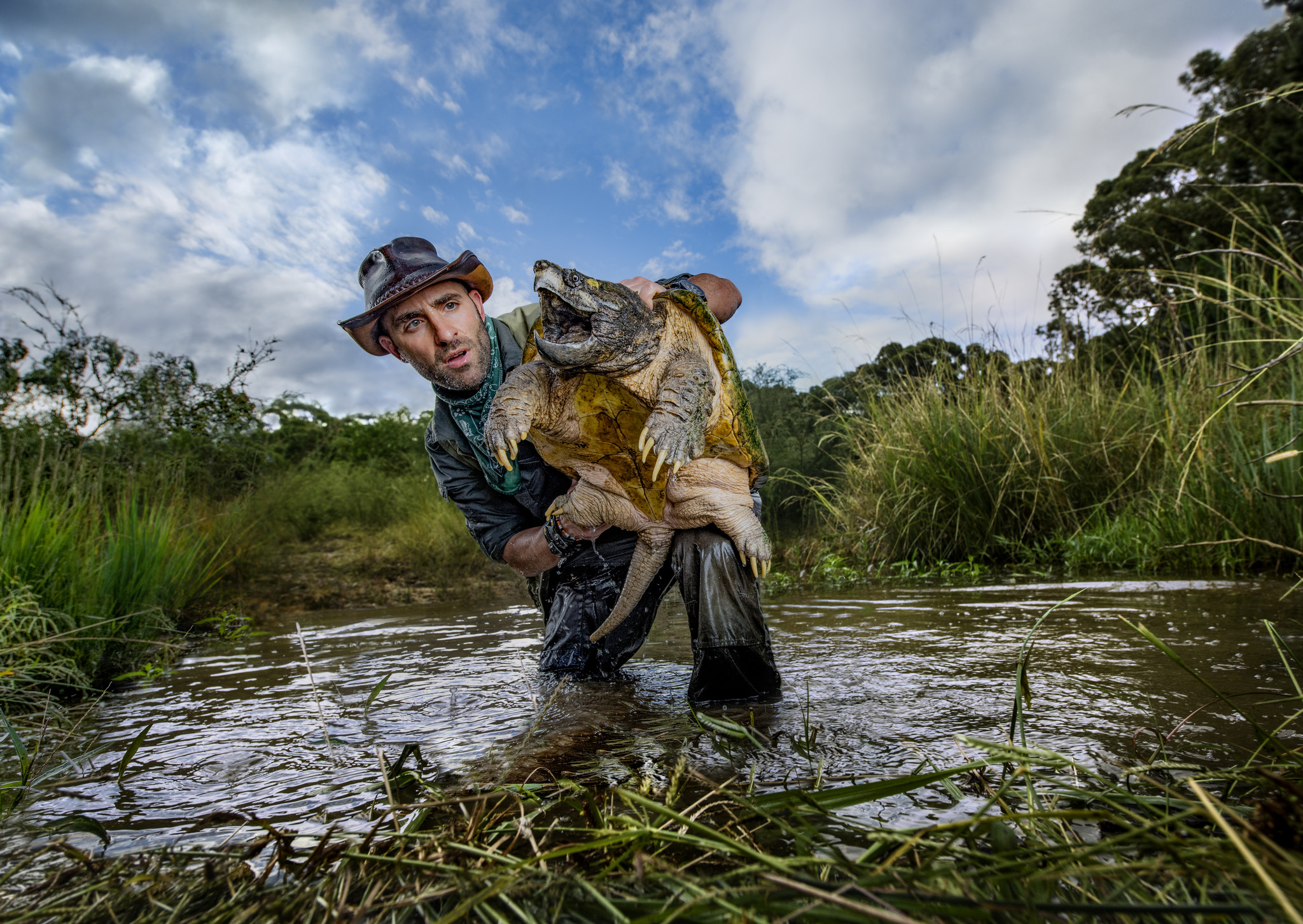
Coyote developed his passion for animal encounters as a child by collecting common snapping turtles - similar to that 50-pound behemoth - from the woodlands near his home in Cleveland, Ohio. Although it started out as a passion project, over the past five years, Coyote has traveled one million miles around the globe to film more than 500 videos for Brave Wilderness. His hard work and bravery have generated over 3 billion views on YouTube and a worldwide following. That demand has culminated in the development of his new show - Coyote Peterson: Brave the Wild, which premiered Sunday, February 9th on Animal Planet.
“It's the kind of pain where you think maybe if I cut my arm off it would be less painful than what it is.”
The alligator snapping turtle episode started a feeding frenzy among Coyote’s fans, known as the “Coyote Pack,” who craved more pain. To date, that video has over 31 million views. Never one to let the fans down, Coyote committed to climbing his way up the insect sting pain index by braving through the stings of the Velvet Ant, Tarantula Hawk, and even the Bullet Ant, among other power-packing insects. Take a look at the reported effects on Schmidt’s Sting Pain Index.
[su_list icon="icon: bug"]
- Velvet Ant - “Explosive and long-lasting, you sound insane as you scream. Hot oil from the deep fryer spilling over your entire hand.”
- Tarantula Hawk - “Blinding, fierce, shockingly electric. A running hair dryer has been dropped into your bubble bath. A bolt out of the heavens. Lie down and scream.”
- Bullet Ant - “Pure, intense, brilliant pain. Like walking over flaming charcoal with a 3-inch nail embedded in your heel.”
[/su_list]
https://www.youtube.com/watch?v=DDHtYfX7bWU
In Arizona’s Sonoran desert, it was an unintentional chomp by a Gila Monster, the only venomous lizard in the US, that stands out as Coyote’s most painful animal encounter to date.
“The pain that I had to endure over the course of eight hours with that one...it's the kind of pain where you think maybe if I cut my arm off it would be less painful than what it is I'm going through. The way that the venom attacks your blood cells and travels through your body is pretty excruciating. They say it's like hot lava coursing through your veins and I can attest to that. It is certainly that painful.”
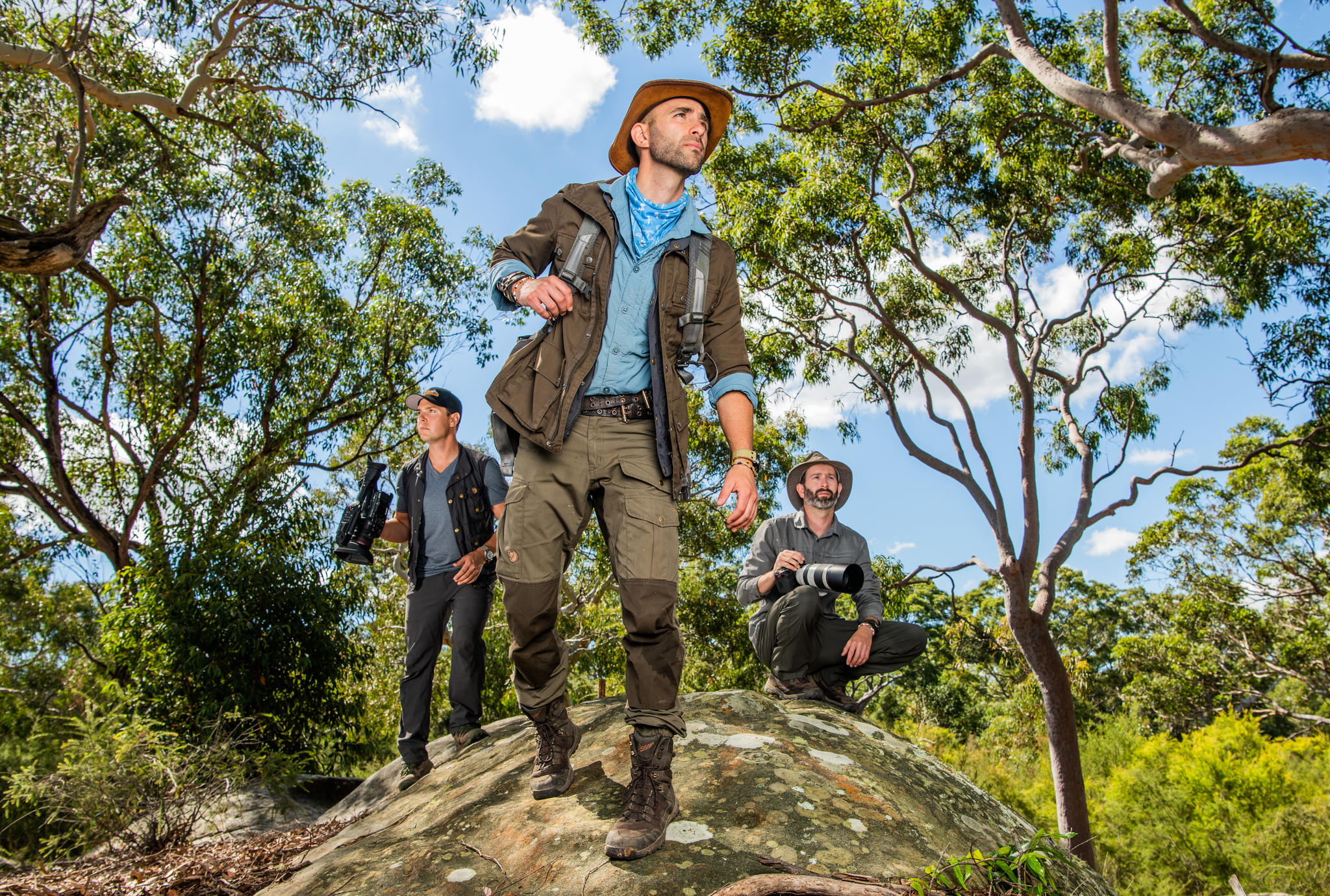
Coyote’s willingness to suffer through painful stings and venomous bits does serve an educational purpose. “We've actually had a number of younger kids that have been accidentally bitten by venomous snakes here in the United States that, knew exactly what to do after being bitten - how to alert their parents and how to properly identify the snake so that they can then let the medical experts know what happened.”
Although Coyote has willingly induced bites and stings, he does, however, pride himself on his ability to handle wild animals safely. “People are always asking, is there going to be a bunch of bite and sting content in the new Brave the Wild series? And the answer to that is no. I don't go out of my way to be bitten and stung by things intentionally. It worked for YouTube, but I actually pride myself in my ability to not be chomped by these creatures. I mean, you can't be a good wildlife presenter if you're getting bitten by things all the time. But that being said, mistakes do happen. And for everybody that wants to know, yes, there are some unintentional bytes in Brave the Wild season one and I promise you there will be some blood. We've got some great moments.”
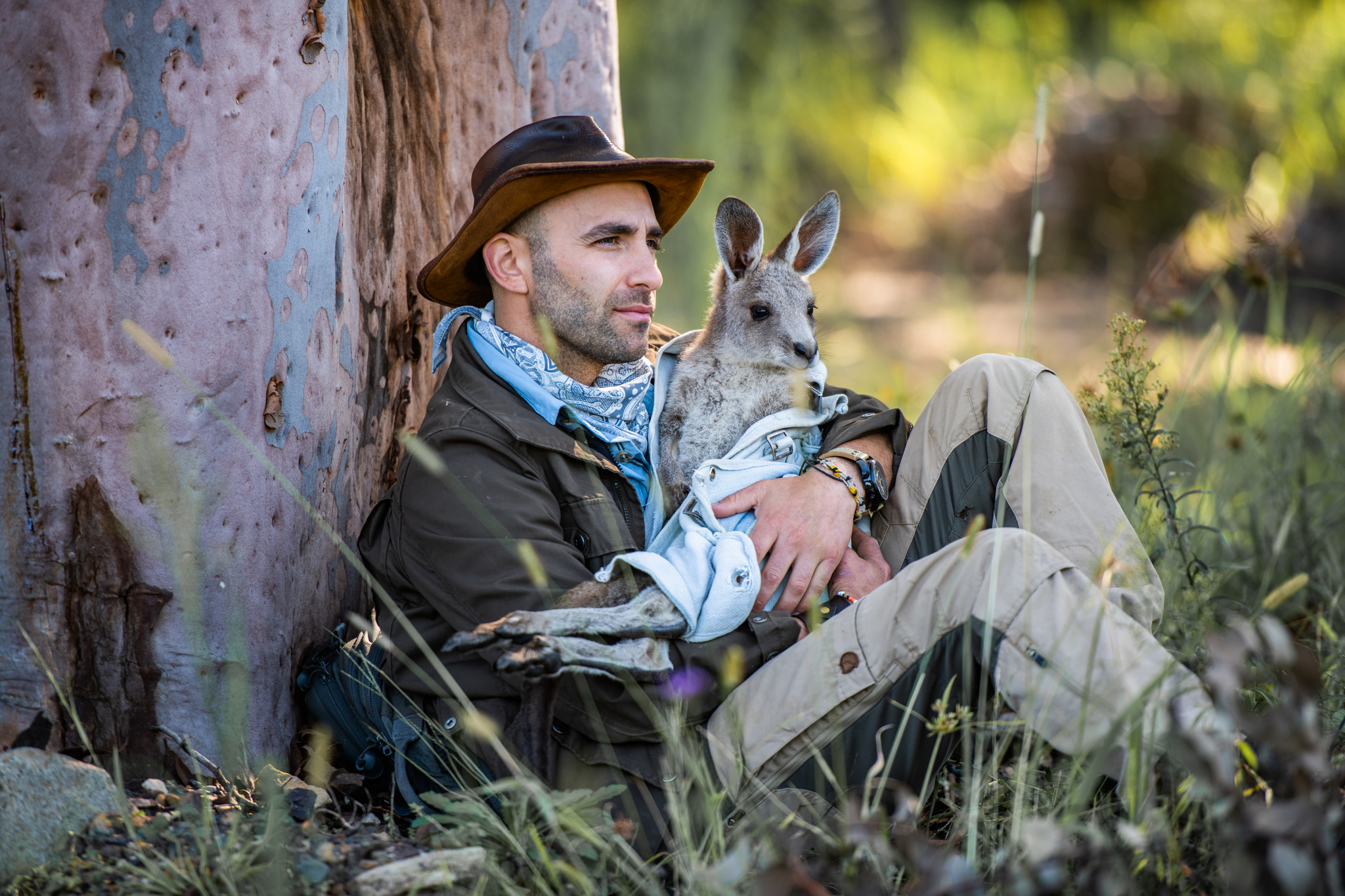
WILD INSPIRATION
Wearing his iconic, rugged leather hat, you can recognize Coyote from a mile away. The grey specs in his beard belie Coyote’s childlike wonder. He’s unflinchingly eager to look behind that next corner or to lift up that next rock, and he maintains that energy while tracking down animals in the wild, which can take as long as eight hours. “The search is the funnest part. Every time we set off into an environment to explore and hopefully come across one of the species that we've researched it’s like a constant treasure hunt because on any given day, depending on the weather, depending on the position of the moon, depending on the temperature of the sun, all of these things play such an incredibly important role and whether or not you will encounter animals.”
“You can't exactly go to school to learn how to catch a snapping turtle or handle a venomous snake or get up close to a grizzly bear.”
Since Jurassic Park came out in ‘93, which he saw 12 times in the theater, Coyote has spent years downloading an entire animal encyclopedia of working knowledge about different animal species into his brain. He can rank an attribute like bite force across species off the top of his head.

“Well, Jurassic Park definitely poised me for knowing how to not get myself eaten by things. But my professional experience, when it comes to interacting with animals, is all self-taught. You can't exactly go to school and say, ‘Hey, I want to take a class on what it takes to catch a snapping turtle or handle a venomous snake or get up close to a grizzly bear.’ These are things that I've honed over many, many years of practice and a lot of it is from my roots here in Ohio, where I was interacting with snapping turtles. So getting to cut my teeth on interacting with a reptile like that in a difficult environment like a swamp definitely primed me for interacting with a lot of the species that you've seen through the Brave Wilderness YouTube channel and of course on Brave the Wild. My formal education is in storytelling and producing, screenwriting and directing. And that's how I combined my ability to tell a good story with also being in front of the camera too.”
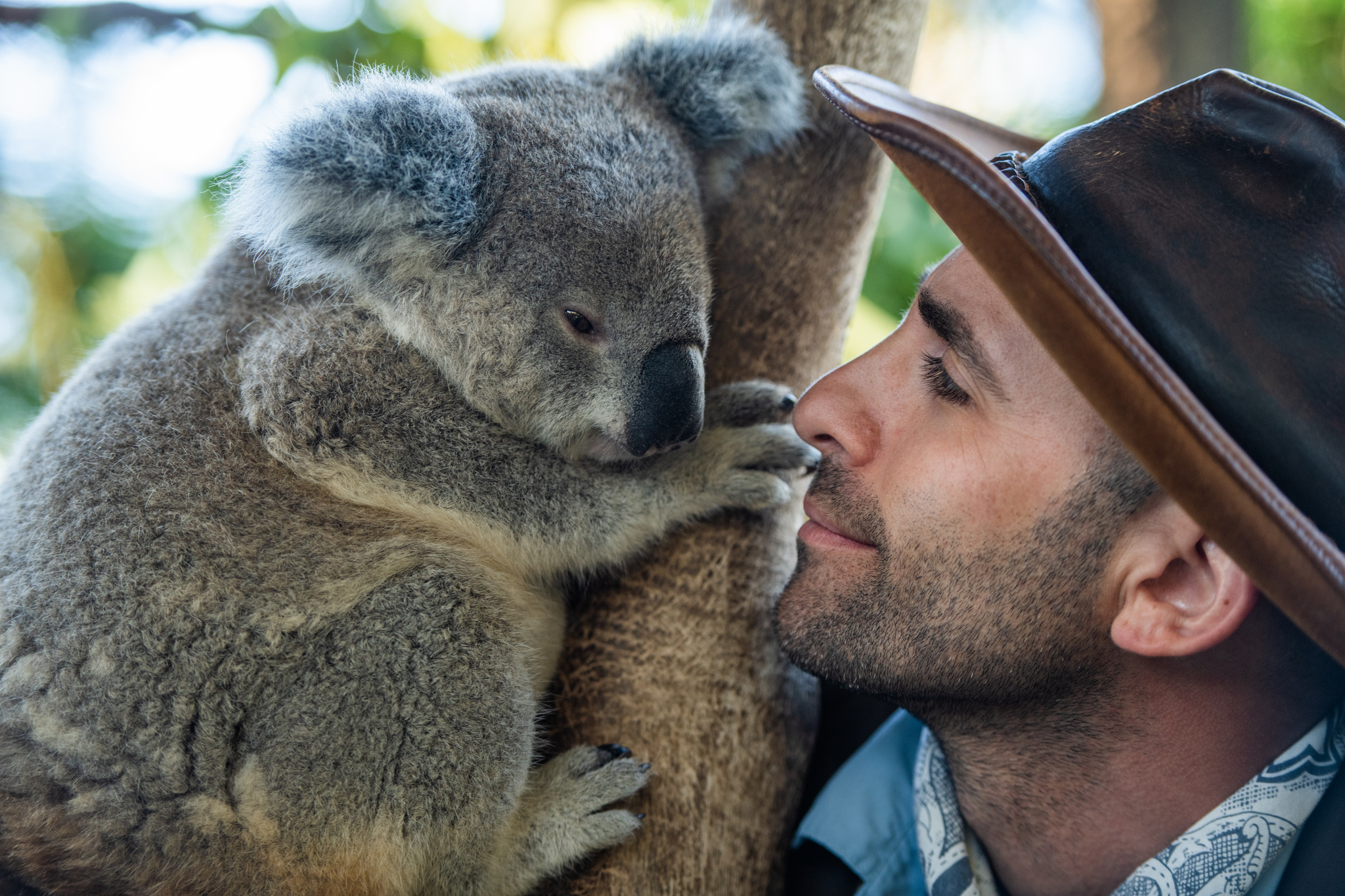
FEARS AND FOLKLORE
Coyote is particularly drawn to educating people about misunderstood animals. He seeks out apex predators in environments that you’ve never heard of to teach you how they survive and to dispel myths, fears and folklore in order to promote animal conservation and also to make sure people stay safe in the wilderness as well as their own backyards.

“One animal that has a huge misunderstanding behind it is something called a Wobbegong, which is also known as a carpet shark. This is a shark species that's similar to a nurse shark, but has much larger, more aggressive-looking teeth, and they're actually quite the voracious predator. And you'll oftentimes find them in the tide pools. Now they're active mainly at night, but during the day they lay on the basin of a tide pool. So you have people out there along the coast of Australia that would go explore the tide pools trying to see fish and crabs and all sorts of things. And these sharks can be laying on the floor, you wouldn't even see one. You'd accidentally step on it. And people oftentimes are bitten on their legs or their feet and they're thinking, ‘Oh my gosh, this shark is aggressive...’ I managed to catch one and dispel some of the myths about these sharks being bloodthirsty killers. And I'd say that goes for sharks as a species in whole. So the Wobbegong, hopefully, will not become a species that people are more in tune with because of the Brave the Wild episode that we did on them.”
In addition to creatures that will chomp off your toe with a smile on their face, Coyote also nuzzles up to some of the cutest animals on the planet, such as baby sloths and furry foxes.
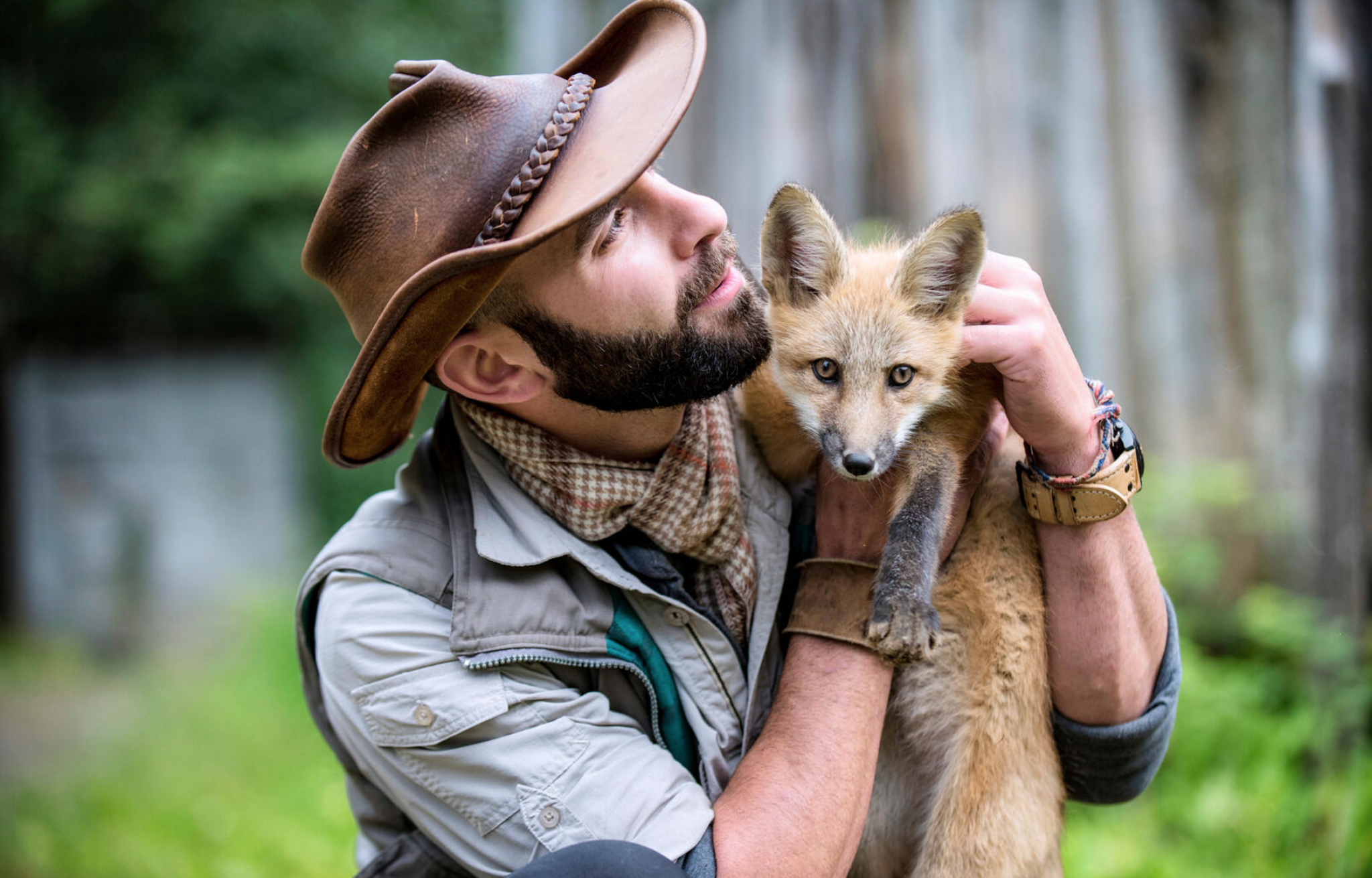
CREATIVE CONTROL
Anyone who has dipped a toe in video editing will appreciate the surprisingly high production value and consistently cinematic footage that his small crew pulls off with handheld cameras and GoPros strapped to various parts of Coyote’s body. That flexibility allows the team to shoot fast and loose when the action strikes out of nowhere, like the time a wild ocelot pounced at Coyote out of the jungle at night.
https://www.youtube.com/watch?v=2oSh_zOaVFk&t=374s
Although Brave Wilderness has received two Guinness World records including Most Subscribed YouTube Channel Dedicated to Animals and Most Viewed YouTube Channel Dedicated to Animals, it started out with one single video and one single view as a passion project. The aspiring independent filmmaker was working a full-time job and filming on his vacation days without generating any money. Yet, despite facing constant rejection from networks, Coyote continued to persevere and keep producing two videos per week because he never stopped believing that the demand would be there. Three billion views later and the television networks have come crawling, but the core of the show will remain, as Coyote has secured full creative control over the content and the team will continue to produce the show out of Columbus, Ohio.

“We faced a lot of rejection early on. I've received more noes over the course of my life than I've received yeses. But it's the perseverance and the belief that there is an audience for this that ultimately led us to creating the Brave Wilderness YouTube channel. And sure enough, here we are now getting ready to debut our first big animal series on Animal Planet. For a network that once told me no, now they see the value of creating an animal adventure series because of what we've built on YouTube. I grew up watching Animal Planet and it's a childhood dream come true to now get to create content within the same family realm that Steve Irwin and Jeff Corwin. These guys held the mantle at some point in time and now we're being entrusted with telling those animal stories in today's day and age with today's technology and we're doing our best to live up to the challenge.”
With Animal Planet’s cooperation, Coyote will be able to take his crew’s already impressive cinematography to the next level. “We still keep a pretty gritty style for the TV show because we realized how well that worked on YouTube. But having a larger budget to produce television has also allowed us is to advance our camera equipment. So some of the cameras and drones that we're using to get the cinematography, along with the gritty GoPro cameras, really makes this show feel like a mix between a series like Planet Earth and the brave Wilderness YouTube channel. I think people are really going to be surprised when they see how the quality level has risen to the next level on Brave the Wild.”
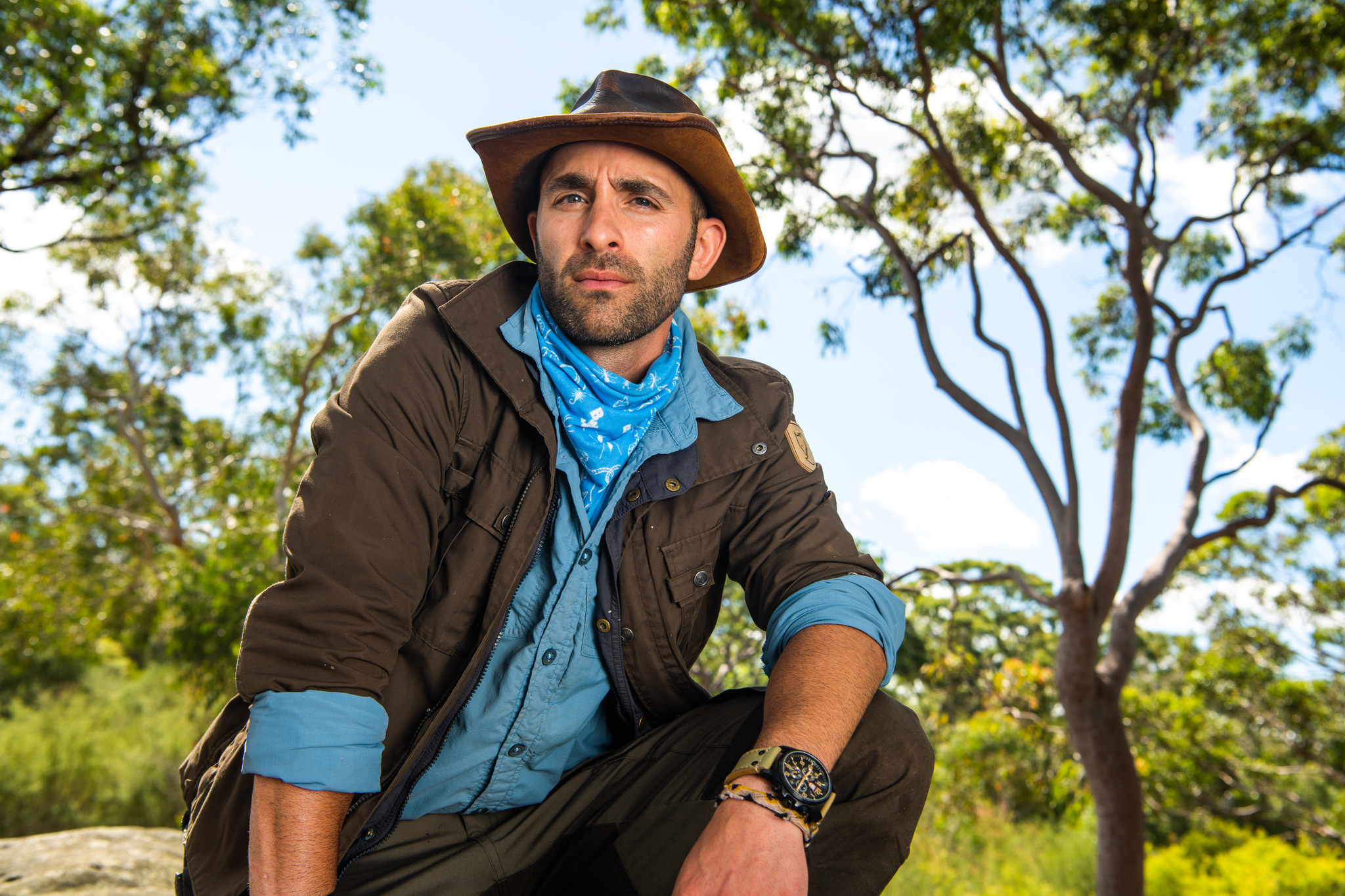
BE BRAVE, STAY WILD
Coyote’s perseverance with Brave Wilderness and now Brave the Wild is an inspirational example of how to turn one’s passion into a career. If no one will offer you your dream job, go out and create it on your own. We are living an era where you can film and upload high-quality content with a device that fits in your pocket and there are no corporate gatekeepers between you and your potential audience. Just go outside and start filming and stick with it. Don’t miss the action on Animal Planet’s Coyote Peterson: Brave the Wild.
This season, Coyote travels to Australia's Devil Ark conservatory to reveal the history behind the critically endangered Tasmanian devil and discovers the manpower needed to conserve this species; to Brazil where Coyote encounters the Yacare Caiman, a cousin of the crocodile, and swims alongside the animal to study its perfect-predator behavior as jaguars lurk from the shoreline; and the swamplands of Texas to search for a giant legendary alligator snapping turtle known as Raphael, among other destinations.
In this episode of The Outdoor Journal Podcast, Coyote discusses his most painful animal encounter experience, how he built Brave Wildnerness from a passion project into a global sensation with over 15 million YouTube subscribers and how he manages to film with hot lava coursing through his veins. (Listen to the full conversation on iTunes).
Follow Coyote and his crew at Brave Wilderness channel on YouTube and on Facebook, Twitter and Instagram (@CoyotePeterson).






Comments ()